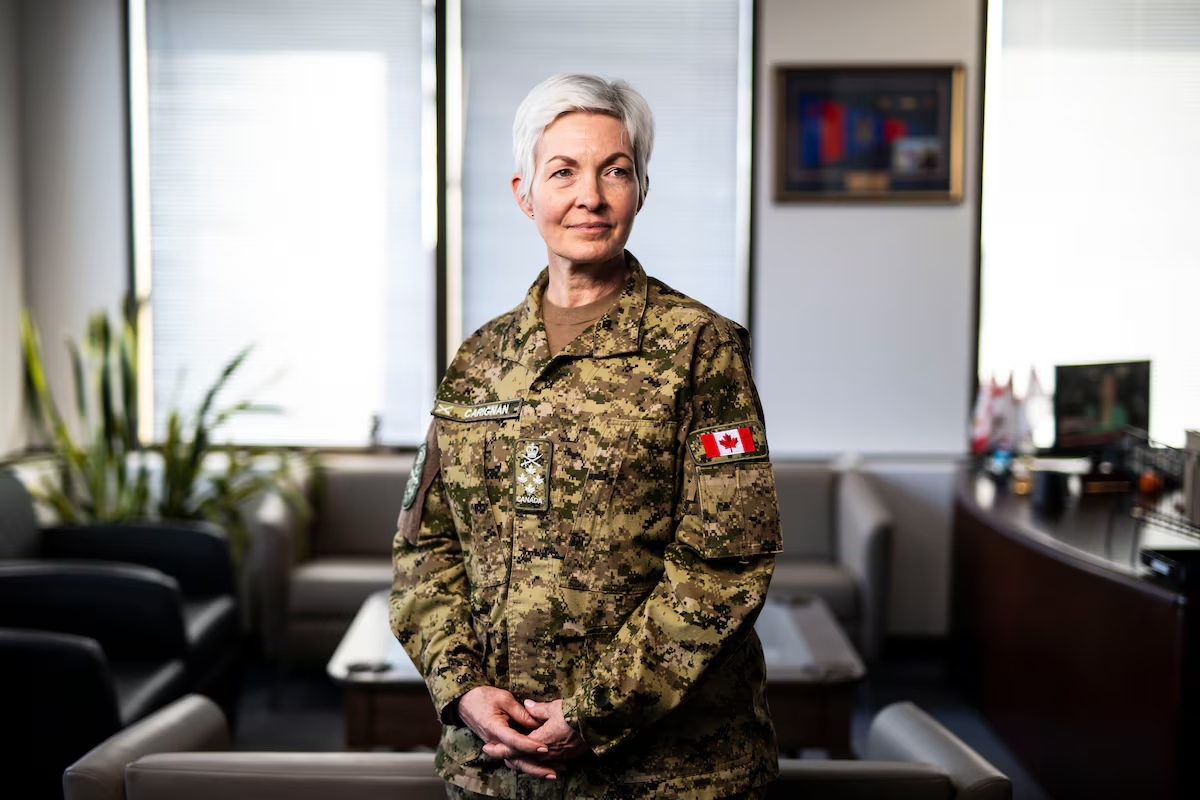Top general plans sweeping expansion of reserves for disasters, military attacks

Open this photo in gallery:
Chief of the Defence Staff Jennie Carignan says the reserve plan was inspired by Finland, which has a reserve force of close to 900,000 citizens.Justin Tang/The Canadian Press
Canada’s top general says she hopes to present options to the Carney government by spring, for a national mobilization plan that would recruit volunteers to join a reserve force of as many as 400,000 to help out in case of natural disasters or military crises.
General Jennie Carignan, Chief of the Defence Staff, said such an undertaking would take five to 10 years to establish. She said Canada is taking inspiration from Finland, which has a reserve force of close to 900,000 citizens.
She said this would be a somewhat new direction for a military that’s normally been focused on expeditionary deployments overseas.
With this, “we are really looking at our own sovereignty, territory, and having those resilient communities who know where to go should anything happen, from pandemics to floods to a missile strike,” Gen. Carignan said in an interview.
Opinion: Canada’s 2025 budget delivers on defence spending – but the devil will be in the details
She said she envisions a reserve force that could expand call-ups based on the situation, noting the requirements placed on the Canadian Armed Forces to respond to climate change-induced disasters such as forest fires have been growing.
“Whereas before, we may have deployed once every five years, like this year only, it’s seven times in six different provinces that we’ve had to respond to various events,” she said.
A directive on the plan signed by the Chief of the Defence Staff in May also envisions such a reserve could help defend the country from military attack, saying uses would span “low-intensity natural disaster response to high-intensity large-scale combat operations.”
Gen. Carignan said she doesn’t see a threat of invasion to Canada but adds there are many risks other than that, including missile attacks.
“I think we need to be well-aware that the current technologies that are being developed by Russia, China, North Korea, Iran, can reach this continent anywhere,” she said. “So they are testing those technologies. It doesn’t mean that they’re going to use them tomorrow, but they are testing those technologies and that can reach this continent, any urban centre.”
Opinion: The idea of a mixed fleet of Canadian fighter jets should not take flight
She also raised the risk of drone attacks. “… we’re talking about hybrid threat and interference and sabotage, which is currently happening in Europe: balloons, UAVs [unmanned aerial vehicles] – that sort of thing,” Gen. Carignan said. “This is why we need the proper mechanism and communities who can spot these things, so that we can intervene and do something about it.”
She said she wants communities across Canada to be prepared to respond and for people there to know who is responsible for stepping up. “When we show up in communities, which already have a plan, already have a network established, they can deal with issues much more easily than when we show up in a community and people don’t know where to go, they don’t know what’s going on, they’re not ready.”
Gen. Carignan also made it clear this mobilization plan does not envision responding to a hypothetical attack from the United States. “That’s not part of it. We’re working closely with the United States on the integrated air missile defence,” she said of Canada’s plans to modernize North American defences.
The directive proposes an increase in primary reserve numbers to 100,000 from about 23,500 today, and a supplementary reserve increase to 300,000 from about 4,300 today. The supplementary reserve these days consists of former CAF members who have said they would be willing to respond to a request for help.
Money has not been allocated to fund this mobilization plan but Gen. Carignan said it could come from additional funding that is being funnelled into the military as part of the federal government’s commitment to raise core defence spending to the NATO target of 3.5 per cent of gross domestic product by 2035.
The directive envisions a supplementary “or other reserve” accommodating both skilled and unskilled volunteers. It would initially look to existing civil servants or those with Canadian Armed Forces service but go far beyond that. Entry criteria such as age limits or physical fitness requirements would be less restrictive than CAF standards. The Ottawa Citizen first reported on the directive and the focus on civil servants.
Gen. Carignan said which reserves would be called upon would depend on the circumstance. “We’re going to be looking at specific skills. So think of dump truck operators, heavy equipment operators, electricians,” she said.
The directive said that after initial training, any sustainment instruction should be limited to five days a year and focus on basic skills such as shooting, communicating, driving a truck or flying a drone.
Ottawa plans to spend big on defence. But is there a long-term vision for Canada’s military?
She said training would depend on the role.
“If you’re a cook, and I need to mobilize a lot of cooks, well, you probably don’t need a lot of training, because you’ve already got the skills.”
Gen. Carignan says she thinks Canadians will respond positively to a call to volunteer for national service. She said she has spoken publicly about the mobilization effort, including at universities like Laval, and at various public-speaking events.
“A lot of people said, ‘I want to do something, but I don’t know what,’” she said, adding she’s read pieces talking about some kind of national service. “I think this could meet some of those expectations.”
This fits with the Carney government’s push for Canada to take greater control of defending and securing its own territory but early discussions on this first happened under the previous government, Gen. Carignan said.




